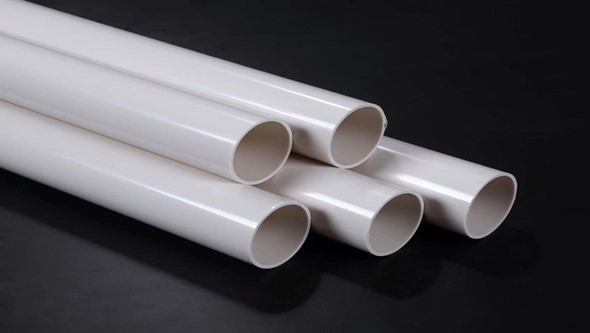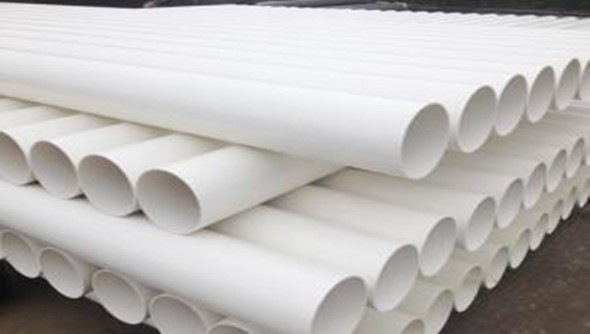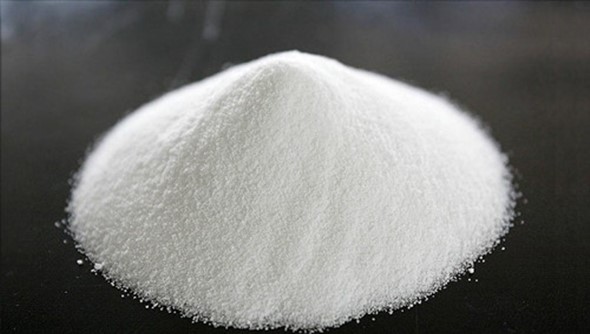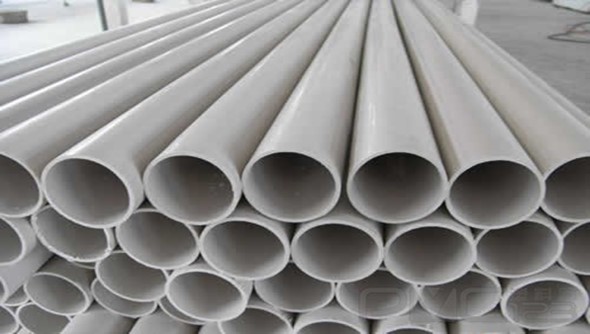-
 PVC inventory continues to decline, but supply pressure still exists05 11,2023
PVC inventory continues to decline, but supply pressure still exists05 11,2023 -
 The main applications of PVC .03 17,2023
The main applications of PVC .03 17,20231. PVC profiles PVC Profiles and profiles are the largest areas of PVC consumption in China, accounting for about 25% of the total PVC consumption. They are mainly used to make doors and windows and energy-saving materials, and their application volume is still increasing significantly nationwide. In developed countries, the market share of plastic doors and windows also ranks first, such as 50% in Germany, 56% in France, and 45% in the United States. 2. PVC pipe Among the many PVC products, PVC pipes are the second largest consumption field, accounting for about 20% of its consumption. In China, PVC pipes are developed earlier than PE pipes and PP pipes, with many varieties, excellent performance and wide application range, occupying an important position in the market. 3. PVC film The consumption of PVC in the field of PVC film ranks third, accounting for about 10%. After mixing and plasticizing PVC with additives, use a three-roll or four-roll calender to make a transparent or colored film with a specified thickness, and process the film in this way to become a calendered film. Packaging bags, raincoats, tablecloths, curtains, inflatable toys, etc. can also be processed by cutting and heat sealing. The wide transparent film can be used for greenhouse, plastic greenhouse and plastic film. The biaxially stretched film can be used for shrink packaging because of its thermal shrinkage characteristics. 4.PVC hard material and board Add stabilizers, lubricants and fillers to PVC, and after mixing, use an extruder to extrude hard pipes, special-shaped pipes, and corrugated pipes of various diameters, which can be used as sewer pipes, drinking water pipes, wire casings or stair handrails . The calendered sheets are superimposed and hot-pressed to make hard plates of various thicknesses. The plates can be cut into desired shapes, and then welded with hot air using PVC welding rods to form various chemical-resistant storage tanks, air ducts and containers. 5.PVC general soft products Extruders can be used to extrude hoses, cables, wires, etc.; injection molding machines can be used to match various molds to make plastic sandals, soles, slippers, toys, auto parts, etc. 6. PVC packaging material PVC products are mainly used in various containers, films and hard sheets for packaging. PVC containers are mainly used in the production of mineral water, beverages, and cosmetic bottles, and are also used in the packaging of refined oils. PVC film can be used for coextrusion with other polymers to produce low-cost laminates, as well as transparent products with good barrier properties. PVC film is also used in stretch or shrink wrap for mattresses, cloth, toys and industrial goods. 7. PVC siding and flooring PVC siding is mainly used to replace aluminum siding. Except for a part of polyvinyl chloride resin, the other components of polyvinyl chloride floor tiles are recycled materials, adhesives, fillers and other components, which are mainly used on the ground of airport terminal buildings and hard ground in other places. 8. Polyvinyl chloride consumer goods Luggage bag is a traditional product made of polyvinyl chloride. Polyvinyl chloride is used to make various imitation leathers for luggage bags and sports products such as basketball, football and rugby. It can also be used to make belts for uniforms and special protective equipment. Polyvinyl chloride fabrics for clothing are generally absorbent fabrics (no coating required), such as rain capes, baby pants, imitation leather jackets and various rain boots. PVC is used in many sports and entertainment products, such as toys, records and sports products. PVC toys and sports products have a large growth rate, and they have advantages due to their low production cost and easy molding. 9. PVC coated products The artificial leather with backing is made by applying PVC paste on cloth or paper, and then plasticizing it above 100°C. It can also be made by rolling PVC and additives into a film first, and then pressing it with the substrate. The artificial leather without backing is directly calendered into a soft sheet of a certain thickness by a calender, and then pressed with a pattern.Artificial leather can be used to make suitcases, purses, book covers, sofas and car cushions, as well as floor leather, which is used as flooring materials for buildings. 10.PVC foam products When soft PVC is kneaded, an appropriate amount of foaming agent is added to form a sheet, which is foamed and formed into a foam plastic, which can be used as foam slippers, sandals, insoles, and shockproof cushioning packaging materials. It can also be used to form low-foaming hard PVC sheets and profiled materials based on extruders, which can be used instead of wood. It is a new type of building material. 11.PVC transparent sheet Add impact modifier and organotin stabilizer to PVC, and become transparent sheet after mixing, plasticizing and calendering. It can be made into thin-walled transparent containers or used in vacuum blister packaging by thermoforming. It is an excellent packaging material and decorative material. 12. Other The doors and windows are assembled with hard profiled materials. In some countries, it has occupied the door and window market together with wooden doors and windows, aluminum windows, etc.; imitation wood materials, steel-substituting building materials (northern, seaside); hollow containers.
-
 The use of paste pvc resin.02 27,2023
The use of paste pvc resin.02 27,2023It is estimated that in 2000, the total consumption of the global PVC paste resin market was about 1.66 million t/a. In China, PVC paste resin mainly has the following applications: Artificial leather industry: the overall market supply and demand balance. However, affected by the development of PU leather, the demand for artificial leather in Wenzhou and other major paste resin consumption places is subject to certain restrictions. The competition between PU leather and artificial leather is fierce. Floor leather industry: Affected by the shrinking demand for floor leather, the demand for paste resin in this industry has been declining year by year in recent years. Glove material industry: the demand is relatively large, mainly imported, which belongs to the processing of supplied materials. In recent years, some domestic manufacturers have set foot in the glove material industry, not only partially replacing imports, but also increasing sales year by year. Since the domestic medical gloves market has not yet been opened and no fixed consumer groups have been formed, there is still a large room for development of medical gloves. Wallpaper industry: With the continuous improvement of people's living standards, the development space of wallpaper, especially wallpaper for high-end decoration, is constantly expanding. For example, the demand for wallpaper in hotels, entertainment venues and some home decorations is expanding. Toy industry: The market demand for paste resin is relatively stable. Dip molding industry: The demand for paste resin is increasing year by year; for example, advanced dip molding is mainly used in electric handles, medical devices, etc. Conveyor belt industry: Demand is stable but downstream enterprises are not doing well. Materials for automobile decoration: With the rapid development of my country's automobile industry, the demand for paste resin for automobile decoration materials is also expanding.
-
 Global PVC demand recovery depends on China.02 14,2023
Global PVC demand recovery depends on China.02 14,2023Entering 2023, due to sluggish demand in various regions, the global polyvinyl chloride (PVC) market still faces uncertainties. During most of 2022, PVC prices in Asia and the United States showed a sharp decline and bottomed out before entering 2023. Entering 2023, among various regions, after China adjusted its epidemic prevention and control policies, the market expects to respond; the United States may further raise interest rates in order to combat inflation and curb domestic PVC demand in the United States. Asia, led by China, and the United States have expanded PVC exports amid weak global demand. As for Europe, the region will still face the problem of high energy prices and inflation recession, and there will probably not be a sustainable recovery in industry profit margins. Europe faces recession Market participants expect European caustic soda and PVC market sentiment in 2023 to depend on the severity of the recession and its impact on demand. In the chlor-alkali industry chain, the profits of producers are driven by the balancing effect between caustic soda and PVC resin, where one product can make up for the loss of the other. In 2021, both products will be in strong demand, with PVC dominating. But in 2022, PVC demand slowed as chlor-alkali production was forced to cut load amid soaring caustic soda prices due to economic difficulties and high energy costs. Chlorine gas production problems have led to tight caustic soda supplies, attracting a large number of orders for U.S. cargoes, pushing U.S. export prices to their highest level since 2004. At the same time, PVC spot prices in Europe have fallen sharply, but will remain among the highest in the world until late 2022. Market participants expect further weakness in the European caustic soda and PVC markets in the first half of 2023, as consumer end-demand is dampened by inflation. A caustic soda trader said in November 2022: "High caustic soda prices are causing demand destruction." However, some traders said that the caustic soda and PVC markets will normalize in 2023, and European producers may benefit during this period For high caustic soda prices. Slumping U.S. demand boosts exports Entering 2023, US integrated chlor-alkali producers will maintain high operating loads and maintain strong caustic soda prices, while weak PVC prices and demand are expected to persist, market sources said. Since May 2022, the export price of PVC in the United States has dropped by nearly 62%, while the export price of caustic soda has climbed by nearly 32% from May to November 2022, and then began to fall. U.S. caustic soda capacity has fallen by 9% since March 2021, largely due to a series of outages at Olin, which also supported stronger caustic soda prices. Entering 2023, the strength of caustic soda prices will also weaken, although the rate of decline may be slower. Westlake Chemical, one of the U.S. producers of PVC resin, has also reduced its production load and expanded exports due to weak demand for durable plastics. While a slowdown in U.S. interest rate hikes could lead to a rise in domestic demand, market participants say the global recovery depends on whether domestic demand in China rebounds. Focus on potential demand recovery in China The Asian PVC market may rebound in early 2023, but market sources say the recovery will remain limited if Chinese demand does not fully recover. PVC prices in Asia will fall sharply in 2022, with quotations in December of that year hitting the lowest level since June 2020. Those price levels appear to have spurred spot buying, raising expectations that the slide may have bottomed out, market sources said. The source also pointed out that compared with 2022, the spot supply of PVC in Asia in 2023 may remain at a low level, and the operating load rate will be reduced due to the impact of upstream cracking production. Trade sources expect the flow of US-origin PVC cargo into Asia to slow in early 2023. However, U.S. sources said that if Chinese demand rebounded, leading to a reduction in Chinese PVC exports, it could trigger an increase in U.S. exports. According to customs data, China's PVC exports reached a record 278,000 tons in April 2022. China's PVC exports slow down later in 2022, as US PVC export prices fall, while Asian PVC prices fall and freight rates plummet, thereby restoring the global competitiveness of Asian PVC. As of October 2022, China's PVC export volume was 96,600 tons, the lowest level since August 2021. Some Asian market sources said Chinese demand will rebound in 2023 as the country adjusts its anti-epidemic measures. On the other hand, due to high production costs, the operating load rate of China's PVC factories has dropped from 70% to 56% by the end of 2022.




